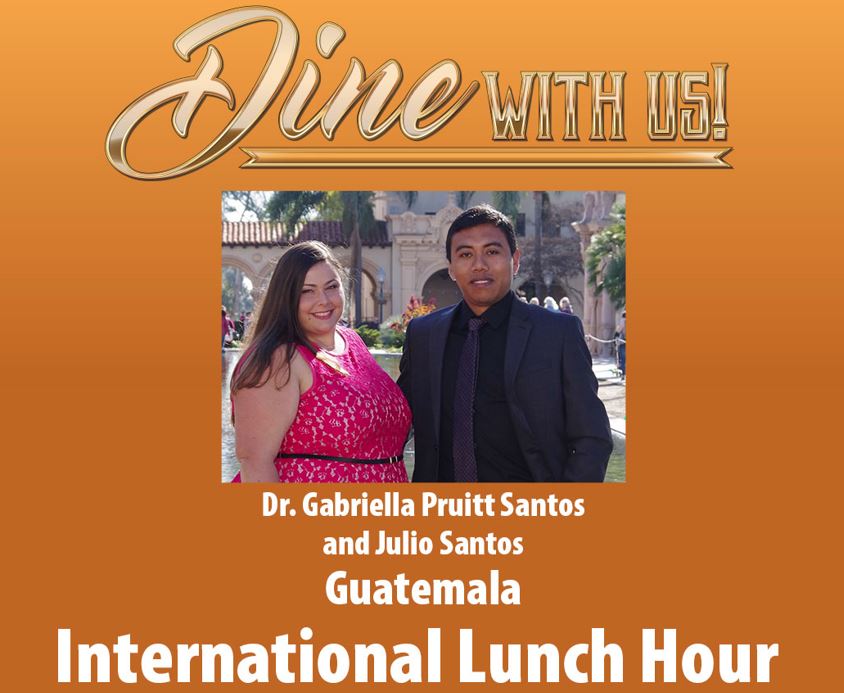Dine with Us lunch series ends semester with spotlight on Guatemala

CHADRON – Chadron State College’s International Club hosted its final Dine with Us lunch of the fall semester Tuesday with a presentation by Dr. Gabriella Pruitt Santos and Julio Santos. Their presentation gave insights into Guatemala’s geography, history, climate, food, and traditions.
Pruitt Santos, an instructor in Political Science, said Guatemala is built on a mountainous terrain. Due to the geographical terrain, there are some distinct differences between different cultural groups in the country of 18 million bordered by Mexico, Belize, Honduras, and El Salvador. Julio Santos talked about ethnic classifications in Guatemala, explaining that about half are Indigenous and the rest are called Ladinos.
The couple talked about the traditional kite festival celebrated each Nov. 1, the country’s version of Mexico’s Día de los Muertos or Day of the Dead. Pruitt Santos said participants make huge kites with messages sent up into the sky meant to connect with and seek guidance from deceased relatives. They said before the Spanish influence and Christianity, the festival took place during the transition from the rainy season to the dry season to thank the gods for a good harvest.
She went on to explain how the diverse cultural groups and even specific villages have traditional identifiers like clothing and musical instruments specific to them. She said the Indigenous people dress in traditional clothing to be differentiated from Ladinos.
According to Wikipedia, the term Ladino commonly refers to non-indigenous Guatemalans, as well as mestizos and westernized Amerindians. The word was popularly thought to be derived from a combination of Latino and ladrón, the Spanish word for "thief," but is not necessarily considered a pejorative.
“You are considered Indigenous if you still speak your traditional language, wear traditional clothing, and follow the cultural rules. This maintains, but limits Indigenous representation,” Pruitt Santos said.
The couple talked about food including corn, beans, bell peppers, chocolate, and squash. Pruitt Santos mentioned that meals have Indigenous, Spanish, and Afro influences.
One Mayan meal she talked about was tamales guatemaltecos.
“It is eaten during Christmas but was used to thank God for a good harvest year. Originally, the meal was used to welcome a new child to the family,” Santos said.
Pruitt Santos referred to Guatemala as the land of Eternal Spring or La Tierra de la Eterna Primavera. It has two seasons, winter and summer. Due to the climate, the economy is based on exporting sugar cane, bananas, oil palm fruit, rubber, and plantains. Other industries include ranching, industry, and services.
In recent years, Guatemala has faced a decline in agriculture due to climate change and increased ecotourism at sites such as Tikal National Park Volcan de Agua and La Antigua, Sacatepéquez.
Pruitt Sanots said the country became democratic from 1944-1964 while the Guatemalan government tried to recover land and property taken by the Spaniards and Americans. The United Fruit Company, an American organization, refused to give back control of the land and staged a coup d’état with the help of the CIA. The coup led to a civil war in Guatemala that lasted 60 years. The U.S. armed residents during the war when neighboring villages attacked each other. Murals in San Juan Comalapa, Sacatepéquez, show scenes since the Civil War. The country was demilitarized in 2004.
Category: Campus News, Belongingness and Inclusion, International Students
